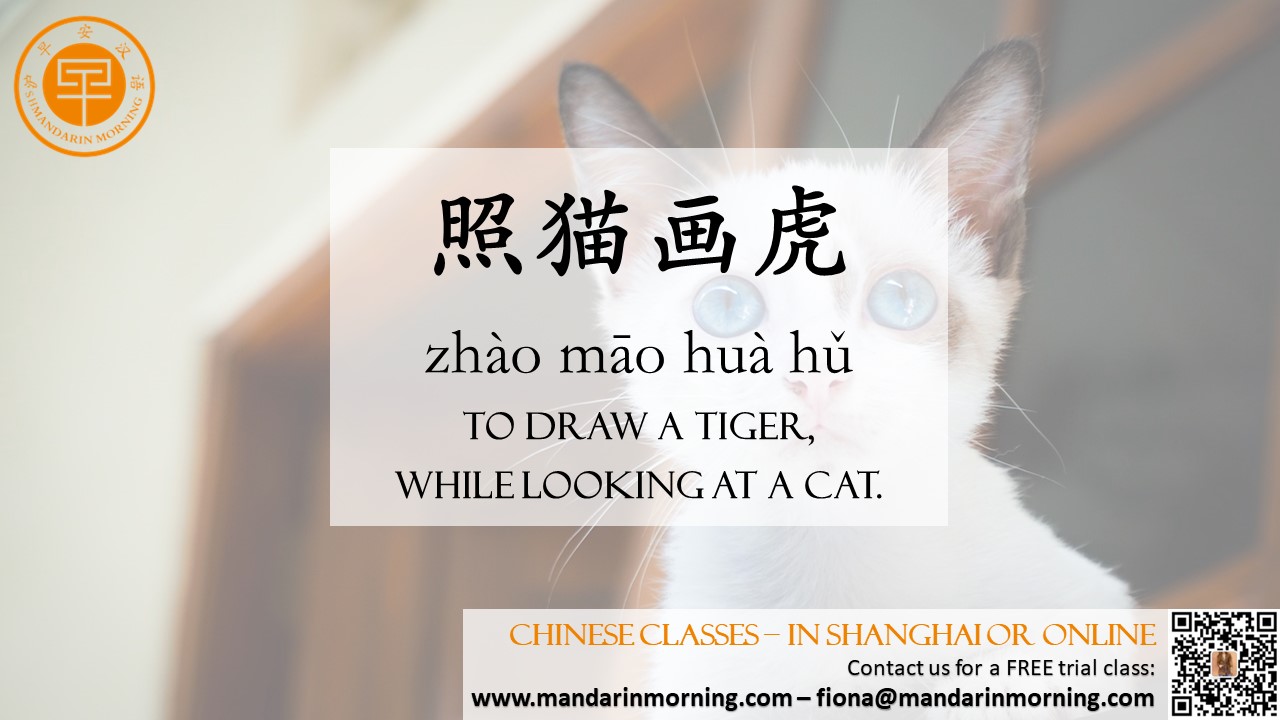The Chinese frequently use idioms in daily communication. Understanding these idioms can highly enhance your understanding of Chinese culture. And for Chinese language learners they’re pretty essential to advance language skills too! In China (and perhaps also in the world), cats are the most popular pets right after dogs. In fact, China’s cat population around 90 million! With so many cat lovers, there is an increasing use of the following cat idioms (also called ‘成语 chéngyǔ’). We’ll discuss 4 of them below: 猫鼠同眠 (māo shǔ tóng mián): The cat and mouse are sleeping together. Meaning: to neglect of one’s duty, covering up the subordinate’s evil deeds, or doing bad things together. 猫哭老鼠 (māo kū lǎo shǔ): The cat cries when the mouse dies. This idiom means to pretend to be sad and compassionate. 争猫丢牛 (zhēng māo diū niú): Get a cat and lose a cow. Meaning: seeking small gains but causing big losses. 照猫画虎 (zhào māo huà hǔ): To draw a tiger, while looking at a cat. The meaning of this idiom is ‘to imitate’ or ‘be sloppy in performing tasks’. The origin of this idiom is related to a late Ming Dynasty story. There was a very famous painter in Penglai City. He particularly likes the stories of the “Liang Mountain heroes” and decided to work on a series painting related to the legend. He painted all the heroes expect the last one called ‘Wu Song’. He felt that Wu Song was inseparable from tigers, but he was not familiar with tigers, so he saved him for the end. Just before he passed away, he called his apprentice in front of him and said, “I’ve not completed my work. You have to finish the painting after I die. You must go to the other side of the mountain to find the tiger, watch carefully and then paint the final painting.” The apprentice obeyed the master’s instructions. He hiked to the mountain with dry food and a self-defense knife to look for tigers. However, he couldn’t find it after many days, and was discouraged. When he met a monk on his journey he explained his troubles. After listening, Monk Xiao smiled and said, “How difficult is it? Can you just find a cat? They look the same.” The apprentice said, “cat is too small.” The young monk said, “Isn’t it better to draw a bigger one? Besides, the cat is still the master of the tiger! You can draw the tiger as a cat.” The apprentice was convinced and went home to find a big yellow cat, and then painted a tiger. He finally completed the Wu Song and Tiger painting and added it to the collection of 108 Liang Mountain heroes. After a literati read it, he wrote an inscription on the edge of Wu Song’s Tiger Fighting: Masterpieces of famous paintings, heroes of 108, and only the painting of Wu Song mistakenly used a yellow cat as a tiger. From then on, the story of the cat and the tiger spread, and became a proverb, specifically describing those who do not perform their tasks responsibility and without adhering to high standards. |